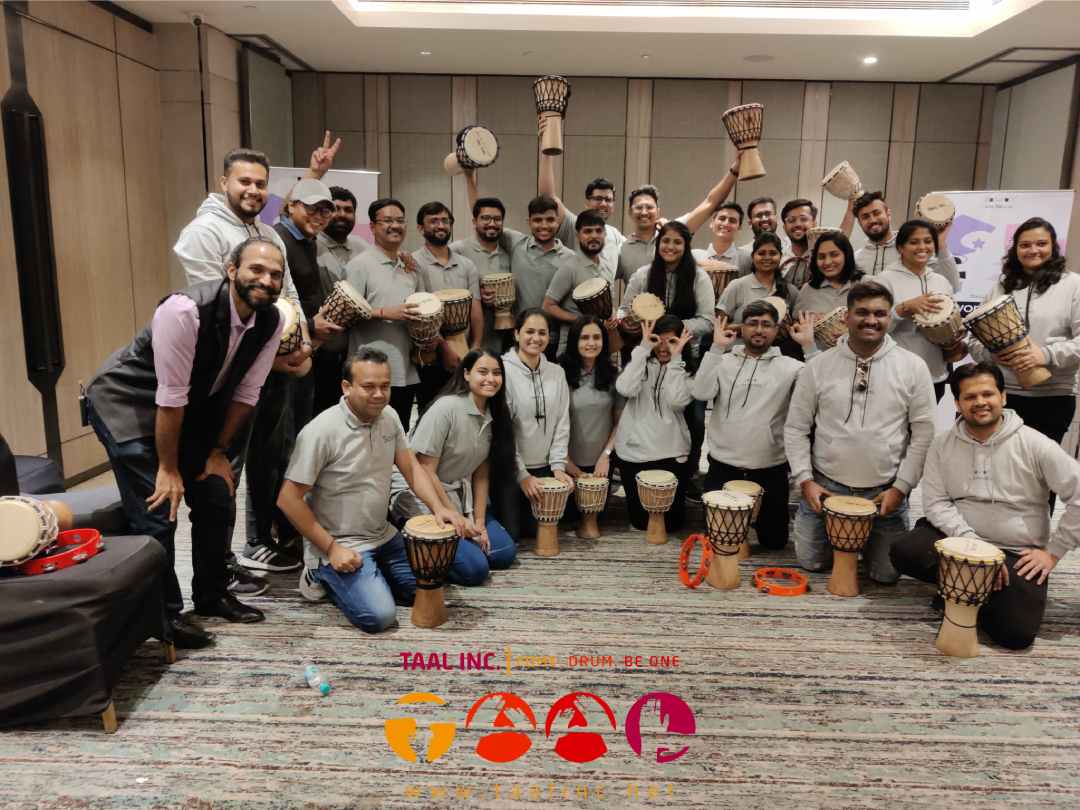In our train-the-trainer course called ‘Find Your Inner Rhythm’, we get asked a lot about how one works with students and how one keeps them engaged over longer periods. In the dynamic landscape of education, innovative methods that engage students and enhance their learning experience are constantly sought after. One such unconventional yet highly effective approach gaining popularity is “Drumming for Education.” (read – ongoing school drum circles or college drum circles) This method, also known as Educational Drumming, introduces rhythmic learning into the classroom, offering a unique and holistic way to foster academic and personal development (all through a method that is FUN!!).
Educational Drumming: A Rhythmic Pedagogy
Educational Drumming, at its core, involves the integration of rhythm and percussion instruments into the educational curriculum. This approach recognizes the profound impact that rhythm can have on cognitive functions and overall student engagement. Rhythmic Learning, as a subset of this concept, capitalizes on the inherent connection between rhythm and memory retention, making learning both enjoyable and effective. This is not only a way to distract the students for a while if they get bored during the mundaneness of a classroom but also a way to intrinsically include rhythmic concepts that connect naturally to a wide range of other naturally occurring teaching content or material.
Benefits of Rhythm in Education
The incorporation of rhythm into education brings forth a myriad of benefits. Firstly, it promotes enhanced focus and concentration among students. The rhythmic patterns create a structured and organized environment, aiding students in staying attentive to their tasks. Additionally, Rhythmic Learning has been shown to improve coordination and motor skills, as students actively engage with percussion instruments.
Furthermore, the benefits extend beyond the cognitive realm to include social and emotional aspects. Classroom Drum Circles, a popular activity within Educational Drumming, facilitate teamwork, communication, and a sense of community among students. The collaborative nature of drumming encourages mutual respect and empathy, fostering a positive and inclusive learning atmosphere. In some cases adding music and rhythm to content can help recall and recognition of material even much after the information has been learned. Now you know how we can remember songs even years after we first hear them.
Classroom Drum Circles: Fostering Community and Collaboration
Classroom Drum Circles involve students coming together to create music through percussion instruments or even items that they can easily gather from their surroundings (junk percussion drum circles) or using their bodies as instruments (body percussion drum circles). This interactive approach not only enhances musical skills but also promotes creativity, teamwork and communication. Students learn to listen to one another, synchronize their beats, and contribute to the collective rhythm. Such collaborative experiences build a sense of community within the classroom, creating an environment where students feel heard, connected and valued.
African Drumming Workshops for Schools:A Cultural Connection
As the landscape of education becomes more diverse, there is a growing appreciation for incorporating cultural elements into the curriculum. India is a country with a rich percussion tradition and we can appreciate the fact that the percussion-based folk music has made its way into the fabric of our day-to-day lives. African Drumming Workshops for schools provide an excellent opportunity to infuse cultural richness into the learning experience. These workshops expose students to the traditional rhythms and beats of African percussion instruments along with their cultural and ethnic information. This offers a unique and immersive cultural experience.
By interlinking the curriculum with African Drumming Workshops, educators can not only enhance the rhythmic learning experience but also broaden students’ cultural awareness. The world is a much smaller place today and celebrating our uniqueness along with our similarities can help debunk a lot of preconceived notions that we may have had about these ethnic groups. This integration aligns with the broader goals of promoting diversity and inclusion within educational settings.
Conclusion: Drumming into a Harmonious Future
Let’s drum more!
Drumming for Education is a powerful pedagogical tool that transcends traditional teaching methods. Educational Drumming, Rhythmic Learning, Classroom Drum Circles, and African Drumming Workshops for schools collectively contribute to a multifaceted approach to learning. The benefits range from improved cognitive functions to enhanced social and emotional wellbeing, making rhythm an invaluable asset in the educational toolkit. As we drum into the future of education, let the beats of innovation and cultural diversity resonate in classrooms worldwide. Get in touch with us if you would like to explore how we can work on integrating rhythm into your institution and curriculum…
Come. Drum. Be One.
Varun Venkit
Team Taal Inc.

Varun is the founder and director of Taal Inc.
The visionary behind the motto
Come. Drum. Be One.
To read more about him Click Here

